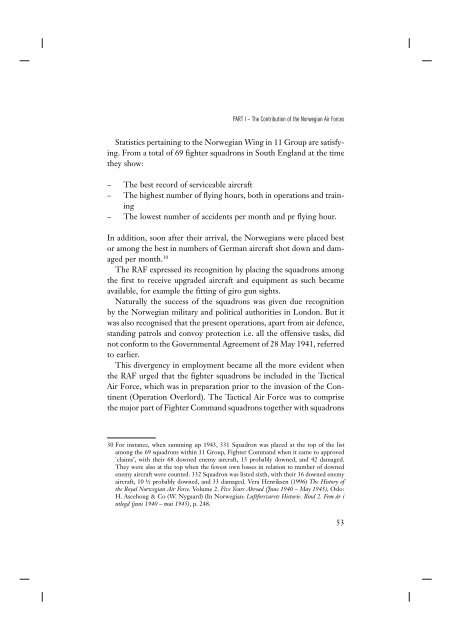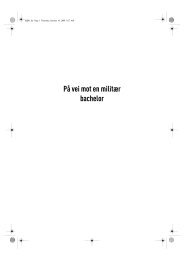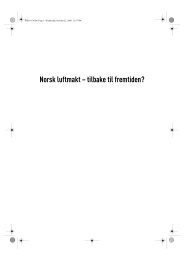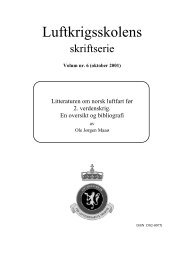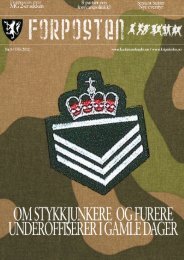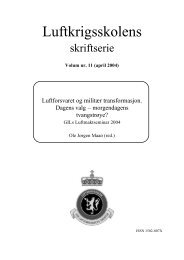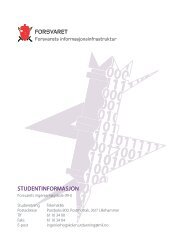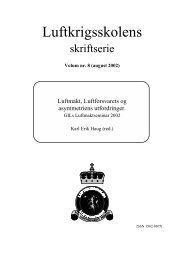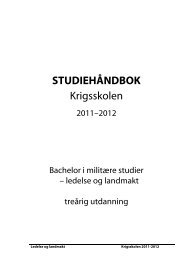Wilhelm Mohr
Wilhelm Mohr
Wilhelm Mohr
Create successful ePaper yourself
Turn your PDF publications into a flip-book with our unique Google optimized e-Paper software.
PART I – The Contribution of the Norwegian Air Forces<br />
Statistics pertaining to the Norwegian Wing in 11 Group are satisfying.<br />
From a total of 69 fighter squadrons in South England at the time<br />
they show:<br />
– The best record of serviceable aircraft<br />
– The highest number of flying hours, both in operations and training<br />
– The lowest number of accidents per month and pr flying hour.<br />
In addition, soon after their arrival, the Norwegians were placed best<br />
or among the best in numbers of German aircraft shot down and damaged<br />
per month. 30<br />
The RAF expressed its recognition by placing the squadrons among<br />
the first to receive upgraded aircraft and equipment as such became<br />
available, for example the fitting of giro gun sights.<br />
Naturally the success of the squadrons was given due recognition<br />
by the Norwegian military and political authorities in London. But it<br />
was also recognised that the present operations, apart from air defence,<br />
standing patrols and convoy protection i.e. all the offensive tasks, did<br />
not conform to the Governmental Agreement of 28 May 1941, referred<br />
to earlier.<br />
This divergency in employment became all the more evident when<br />
the RAF urged that the fighter squadrons be included in the Tactical<br />
Air Force, which was in preparation prior to the invasion of the Continent<br />
(Operation Overlord). The Tactical Air Force was to comprise<br />
the major part of Fighter Command squadrons together with squadrons<br />
30 For instance, when summing up 1943, 331 Squadron was placed at the top of the list<br />
among the 69 squadrons within 11 Group, Fighter Command when it came to approved<br />
`claims’, with their 68 downed enemy aircraft, 15 probably downed, and 42 damaged.<br />
They were also at the top when the fewest own losses in relation to number of downed<br />
enemy aircraft were counted. 332 Squadron was listed sixth, with their 36 downed enemy<br />
aircraft, 10 ½ probably downed, and 33 damaged. Vera Henriksen (1996) The History of<br />
the Royal Norwegian Air Force. Volume 2. Five Years Abroad (June 1940 – May 1945), Oslo:<br />
H. Ascehoug & Co (W. Nygaard) (In Norwegian: Luftforsvarets Historie. Bind 2. Fem år i<br />
utlegd (juni 1940 – mai 1945), p. 248.<br />
53


